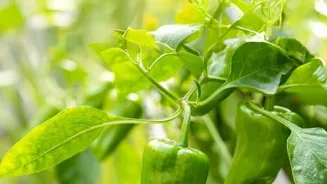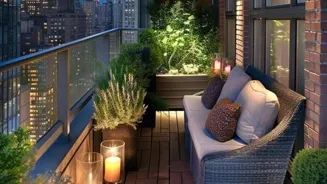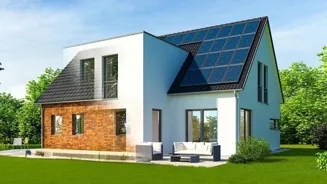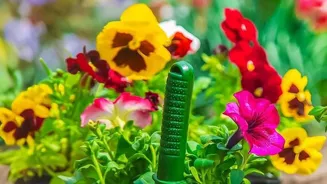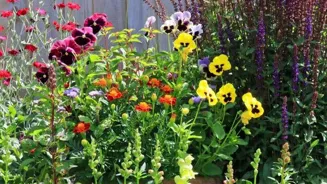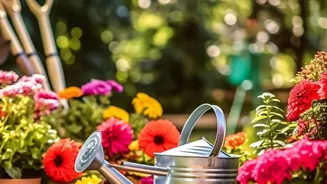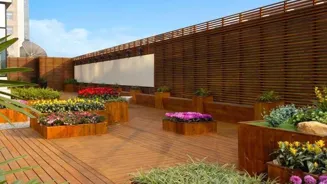Embark on a green journey with "10 Simple Steps to Create a Sustainable Home Garden." Start today and grow your paradise!
New Delhi: In today's world, where everything feels fast-paced and sometimes disconnected
from nature, creating a sustainable home garden is like bringing a little piece of peaceful, green paradise right to your doorstep.
It's not just about growing plants; it's about creating an ecosystem that's good for you, good for the environment, and surprisingly easy to get started with.
Whether you have a sprawling backyard or a tiny balcony, these 10 simple steps will guide you in creating a home garden that's both beautiful and eco-friendly. So, put on your gardening gloves, grab your tools, and let's get started on this green journey!
Assess Your Space and Sunlight
Before diving into the exciting world of plants, take a good look at your available space. How much sunlight does it get? Is it mostly sunny, shady, or a mix of both? Different plants have different sunlight needs. Some thrive in full sun, while others prefer shade.
Observing your space for a few days will give you a good idea of which areas are best suited for different types of plants. This initial assessment is crucial for choosing the right plants that will flourish in your garden. Remember that accurate assessment ensures the healthiness of the garden.
Plan Your Garden's Layout
Once you understand your space, it's time to plan the layout of your garden. Think about what you want to grow. Vegetables, herbs, flowers, or a combination of all three? Consider creating a sketch of your garden, marking where you'll plant each type of plant.
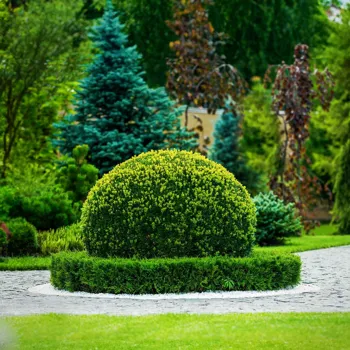
Group plants with similar needs together. This makes watering and maintenance much easier. Also, think about the size of the plants at maturity. Don't overcrowd your garden, as this can lead to competition for resources and hinder growth.
Good strategic planning keeps your garden flourishing and orderly.
Choose the Right Plants
Choosing the right plants is the heart of any successful garden. Opt for native plants whenever possible. These plants are already adapted to your local climate and require less water and care. Consider starting with easy-to-grow options like tomatoes, spinach, basil, and marigolds.
Don’t be afraid to experiment, but always research the specific needs of each plant before you bring it home. Local nurseries are a great resource for advice and information on plants that thrive in your area. Proper knowledge and the right selection of plants are the keys to successful gardens.
Improve Your Soil
Healthy soil is the foundation of a healthy garden. Most garden soils benefit from amendments like compost, manure, or other organic matter to improve drainage, fertility, and water retention. You can also get your soil tested to determine its pH level and nutrient content.
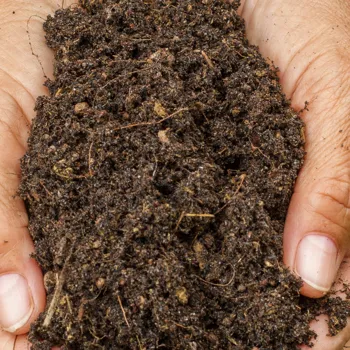
This will help you tailor your soil amendments to meet the specific needs of your plants. If you're gardening in containers, use a high-quality potting mix that drains well. With proper soil, you will have a thriving green space.
Start Composting
Composting is a fantastic way to recycle kitchen and yard waste into nutrient-rich soil amendments for your garden. Start a compost bin or pile in a corner of your yard. Add fruit and vegetable scraps, coffee grounds, tea bags, grass clippings, and leaves.
Avoid adding meat, dairy, or oily foods, as these can attract pests. Turn the compost regularly to aerate it, and in a few months, you'll have a wonderful source of organic matter for your garden. Composting reduces waste, enriches your soil, and helps improve the environment.
Water Wisely
Proper watering is crucial for plant health. Water deeply and less frequently, rather than shallowly and often. This encourages roots to grow deeper, making plants more resistant to drought. Water early in the morning or late in the evening to minimize water loss through evaporation.
Consider installing a drip irrigation system or using a soaker hose to deliver water directly to plant roots. It is very important to use water judiciously for your garden.
Practice Natural Pest Control
Avoid using chemical pesticides in your garden. They can harm beneficial insects, pollute the soil, and pose risks to your health.
Instead, opt for natural pest control methods like handpicking pests, using insecticidal soap, or attracting beneficial insects like ladybugs and lacewings to your garden. Companion planting can also help deter pests – for example, marigolds repel nematodes and other harmful insects.
Using natural pest control ensures a healthy and balanced ecosystem in your garden.
Mulch Your Garden
Mulching is like giving your garden a cozy blanket. It helps retain moisture in the soil, suppresses weeds, regulates soil temperature, and adds organic matter as it breaks down. Use organic mulches like straw, wood chips, shredded leaves, or compost.
Apply a thick layer of mulch around your plants, being careful not to pile it up against the stems. This helps keep your area clean and healthy.
Save Seeds
Saving seeds from your favorite plants is a great way to reduce waste, save money, and preserve genetic diversity. Choose seeds from healthy, vigorous plants. Allow the flowers or fruits to mature fully before collecting the seeds.
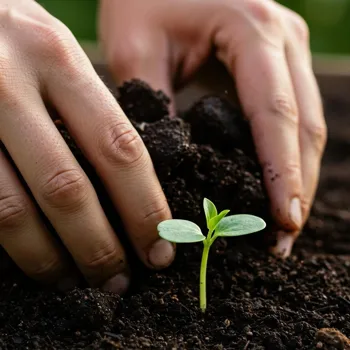
Dry the seeds thoroughly and store them in an airtight container in a cool, dark place. Remember to label each container with the plant name and date. Seed saving is a rewarding practice that connects you to the cycle of life in your garden.
Embrace Sustainability: The most important thing is to embrace the principles of sustainability in your garden. This means using resources wisely, minimizing waste, and working in harmony with nature. Create a habitat for wildlife by planting native plants and providing sources of water and shelter. Avoid using plastic whenever possible, choosing biodegradable pots and tools instead. A sustainable garden is a living expression of your commitment to the environment and a healthier future.
Creating a sustainable home garden is not just about growing pretty plants; it's about making a positive impact on the environment and creating a space of beauty, peace, and connection to nature.
Happy Gardening!



